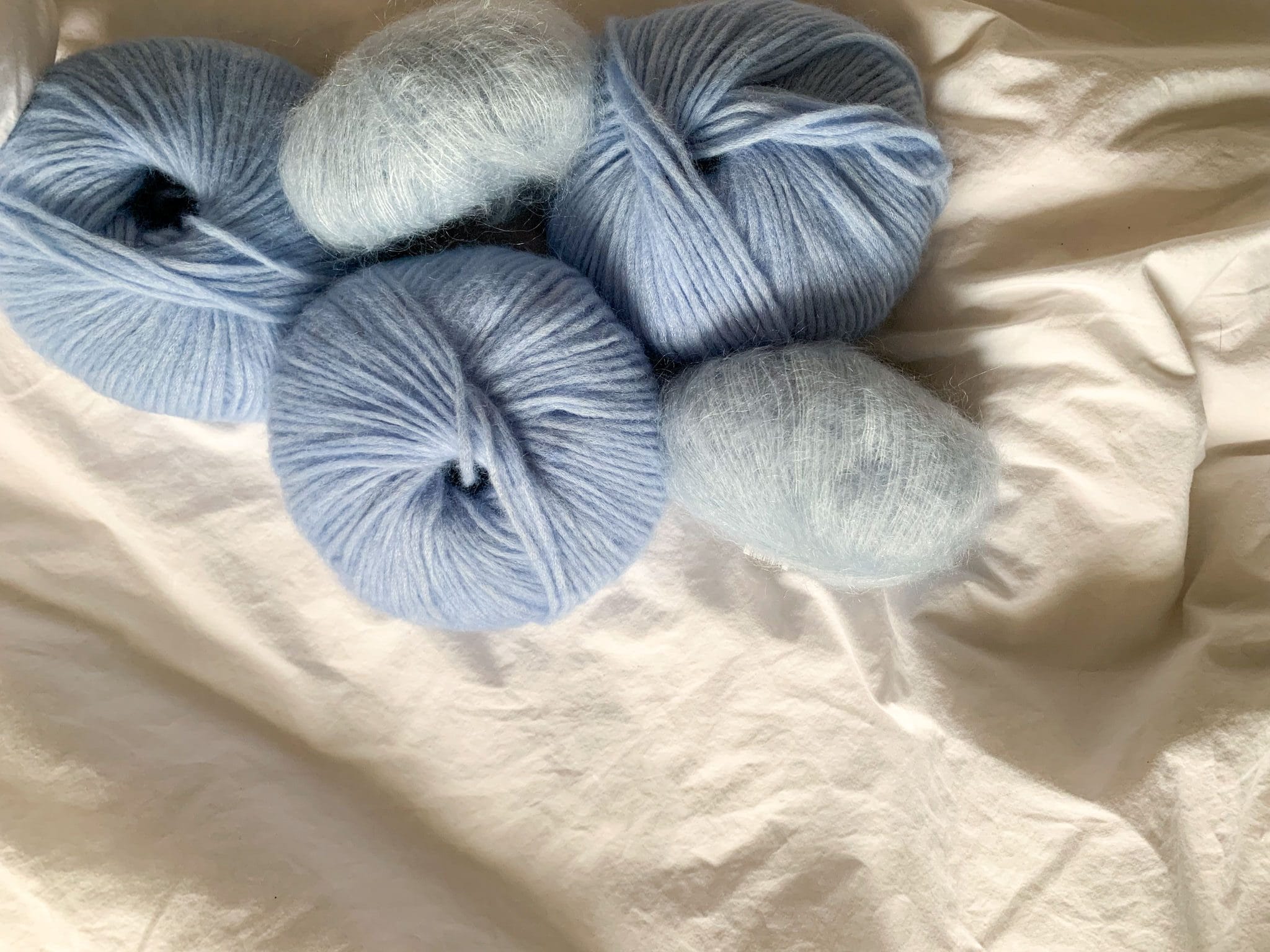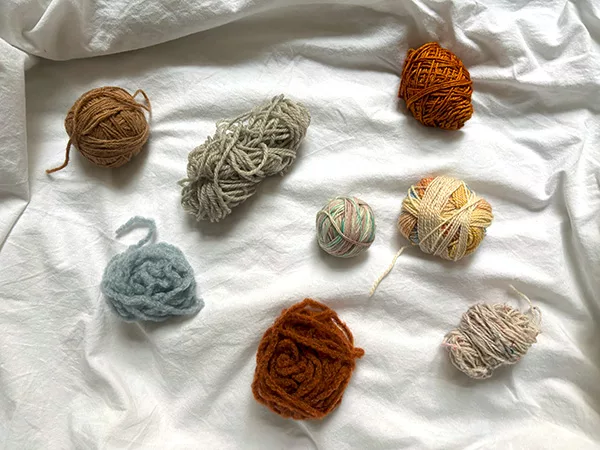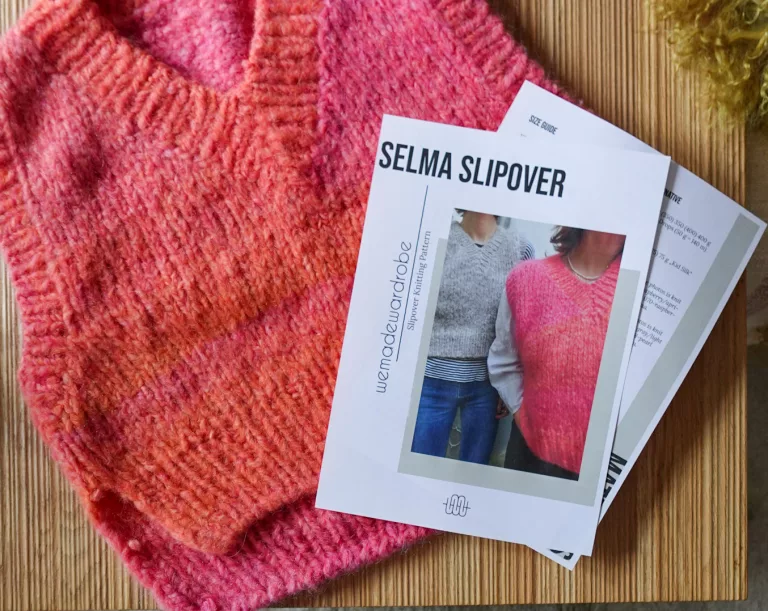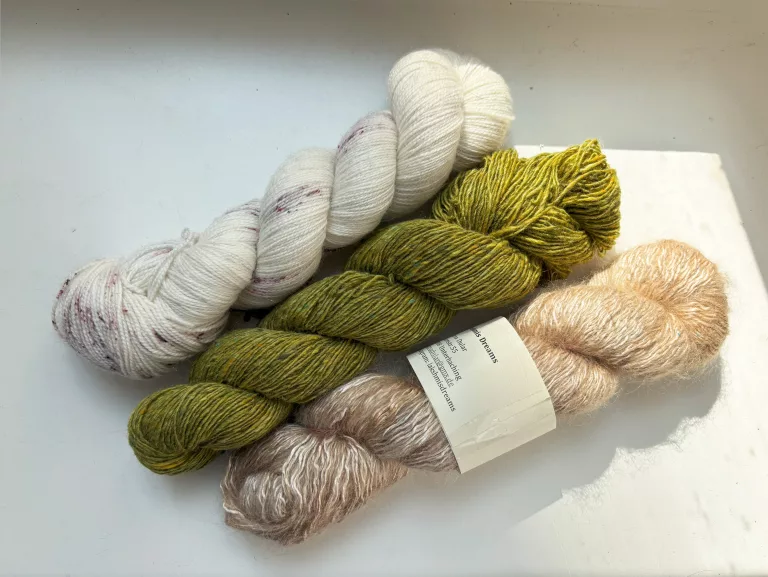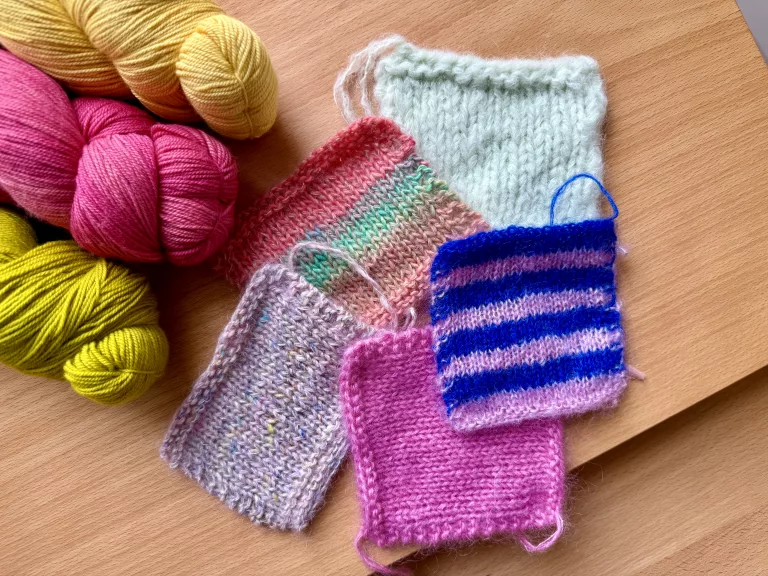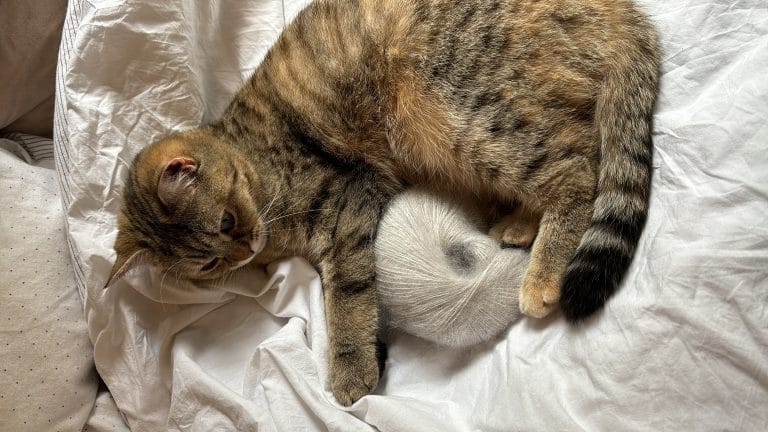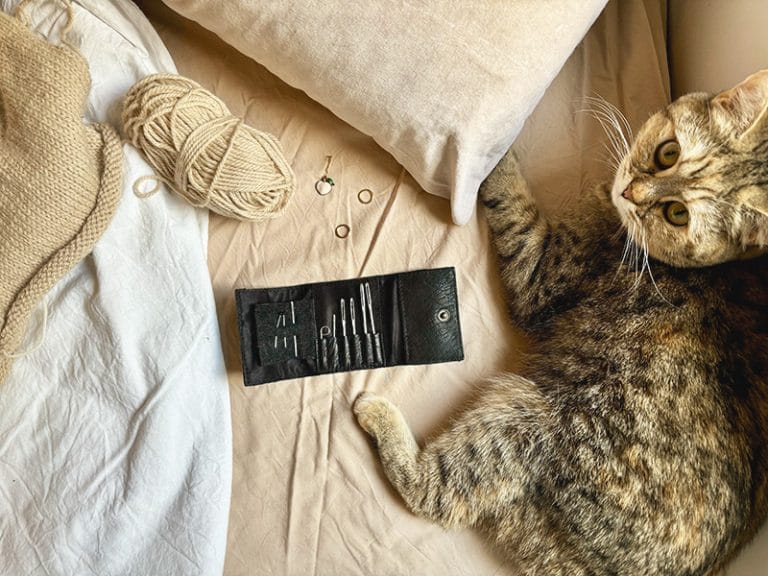How to choose the right yarn for knitting and your knitting projects
When knitting, choosing the right yarn for knitting is very important, as it not only influences the look of your project, but also its wearing properties and care requirements. There are many different types of fibres, each with their own benefits and characteristics. Here are some of the most popular natural fibres and what you should know about them:
Alpaca

Alpaca wool is known for its softness and warmth, making it perfect for cozy winter clothing. It comes from Alpacas, South American relatives of llamas. These animals have been bred for thousands of years by the indigenous people of the Andes and are considered extremely valuable animals because of their wool.
Alpaca yarn for knitting projects is particularly suitable for sweaters, scarves and hats that keep you warm on cold winter days, as the alpaca fiber insulates particularly well and retains body heat.
Caring for alpaca yarn often requires hand washing in cold to lukewarm water to avoid felting. It is definitely a winter fiber made for the cold seasons. Alpaca wool is very high quality, which is also reflected in the price. It is one of the more expensive types of yarn due to its special properties.
The knitting experience when knitting with alpaca varies depending on how it is processed. However, it is usually very pleasant, fluffy and slips easily over the needles without being slippery. This is why this fiber is also suitable for beginners.
COTTON

Cotton is popular due to its lightness and breathability. Cotton is obtained from the seed hairs of the cotton plant, spun and processed into yarn.
The use of cotton goes back thousands of years. Its cultivation began in ancient cultures such as those in Egypt and India. Cotton played an important role in trade and textile production and is still one of the most commonly used fibers in the textile industry today. The cotton plant is grown in many countries, including India, China, the USA and many African countries.
Cotton is best suited for knitting lightweight garments, baby clothes and summer projects in general. So if you want to knit an airy, breathable garment, such as T-shirts, tops or shorts, cotton could be the perfect choice.
When it comes to caring for cotton, it is usually machine washable, but make sure to use low temperatures to prevent shrinkage.
Knitting with cotton yarn is comfortable, especially in summer, as you won’t get sweaty hands in hot temperatures with this yarn. However, cotton can also be less soft than other fibres, such as merino wool, and can slip around and off the needles – but that depends on the thickness of the yarn and the type of spinning.
Cotton is widely used and available in different price ranges. The quality varies depending on the origin and processing. It tends to be a more affordable natural yarn option.
LINEN

Linen is the perfect yarn for knitting for warm weather. The fiber is comfortable when worn and feels cool against the skin. Linen has a long history and was used thousands of years ago. It was one of the earliest plant fibers to be used for textiles. In Europe in particular, linen was a popular fiber for clothing, household items and even sailcloth for centuries.
The fiber comes from the flax plant, which is mainly grown in Europe, and is ideal for summer clothing as well as lightweight sweaters and accessories.
But due to its cooling and airy properties, it is best suited for summer tops such as tops or T-shirts. The feel of knitting with pure linen clearly depends on the quality of the yarn chosen. As linen is not particularly soft before washing, the fiber can rub against your fingers and be less comfortable.
Hand washing or machine washing on a gentle cycle at low temperatures is recommended to avoid subjecting your knitwear to unnecessary stress. High-quality linen can be expensive, while cheaper versions are often coarser and less refined.
Merino

Merino wool is probably one of the most popular and versatile yarn for knitting. It comes from merino sheep and is soft and smooth compared to the wool of other sheep breeds. It is well suited for many different projects, from warm winter sweaters to lightweight scarves and baby clothes. Care often requires gentle hand washing with special wool detergent.
Merino wool comes mainly from sheep bred in Australia, New Zealand and South Africa. Historically, it was one of the most sought-after types of wool for high-quality clothing.
One of the things that makes merino wool so popular is its temperature-regulating properties, which means it can be worn all year round and is therefore also perfect for knitting baby clothing. Merino wool can be used to knit sweaters and hats as well as T-shirts and summer knitwear. The knitting experience is very a very luxurious, pleasant and soft and therefore this yarn is also suitable for beginners.
When washing, please note that the fiber tends to grow. So a sweater that was too small before can become wider with washing. Merino is one of the more expensive fibers, although the qualities also differ and you can sometimes find merino wool for a very reasonable price.
Mohair

Mohair comes from Angora goats, which originally came from Turkey but are now bred worldwide. It has been a popular fibre for royal and high-end clothing for many centuries due to its softness and lustre.
Mohair yarn is known for its fluffy, light, yet warming nature. It is a great choice for jumpers and scarves to keep you warm on chilly evenings. Mohair is often spun together with silk to create a very thin and fluffy, silky yarn called “kid silk” or “silk mohair”. The difference between these can be found in the age of the goat, as kid mohair is obtained from a young goat and is therefore even softer than that from an older goat. This blended yarn of silk and mohair is used for light, elegant scarves and lace shawls or as a lace weight yarn held together with merino, virgin wool or another thicker yarn to enhance it and make it fluffier. The feel of knitting with mohair is very soft and pleasant. As unraveling such a fluffy yarn is rather difficult, it is not suitable for beginner knitters. Mohair should also not be used for baby clothes, as the fine fibres can cause allergic reactions on sensitive baby skin.
Caring for this type of fibre also requires gentle hand washing in cold water, as mohair is rather delicate. High-quality mohair is more expensive due to its special properties and the complex manufacturing process.
Virgin wool

Virgin wool comes from different breeds of sheep and is particularly suitable for winter projects. The wool is shorn from the sheep, washed, combed and then spun into yarn. Wool was one of the first fibres used by humans for clothing and other textiles and is still one of the most commonly used fibres in the textile industry today.
It is well suited for robust garments such as jumpers, socks and blankets. Virgin wool is perfect for beginners, as the wool is less slippery, even if the knitting feel is less luxurious than with other fibres, such as merino wool. Care requires hand washing with wool detergent to avoid felting.
Virgin wool is definitely a winter yarn for knitting due to its insulating properties. High-quality virgin wool is often more expensive due to its fine quality and finish, whereas more rustic, natural virgin wool can be less expensive.
Silk

Silk is produced by silkworms and originaltes from China, but is now produced in many countries, including India. Silk is obtained by unrolling the silk cocoons and spinning the threads. Historically, silk was extremely valuable and an important part of trade between East and West. It was a symbol of luxury and elegance and is still valued today for its sheen and softness.
Silk yarn makes elegant and high-quality garments such as scarves, gloves and light jumpers or summer tops. Caring for silk garments also requires hand washing in cold water, as silk is sensitive to heat and friction.
Silk is versatile and can be worn all year round, but it is particularly suitable for summer projects.
Which yarn for knitting is the best choice for beginners?
For beginner knitters, it is advisable to choose a yarn with a firm twist. The advantage of this type of yarn is that it prevents accidental piercing through the yarn with the knitting needle, which could lead to yarn splitting. In addition, thicker yarns with a used needle size of 7 to 8 mm offer quick success when knitting. The thickness of the yarn makes the stitches easier to recognise, which is helpful for beginners. It is advisable not to choose black or dark yarn for your first knitting project, as the stitches are less visible on the needles in these colours. The most suitable fibre types for beginner knitters are virgin wool, merino or cotton. If you aren’t sure which yarn you should choose, always check out the pattern you are wanting to make. There are usually more than one reccomended yarn, and if you want you can substitute that by leaning how to substitute yarn.
Have fun knitting! <3

